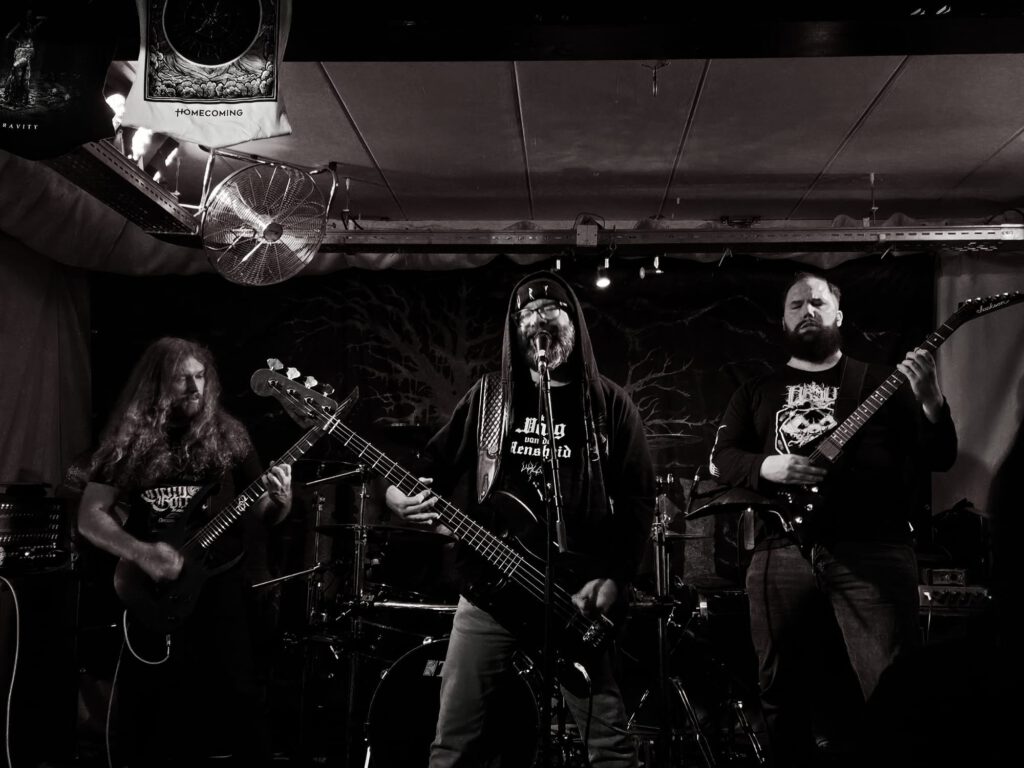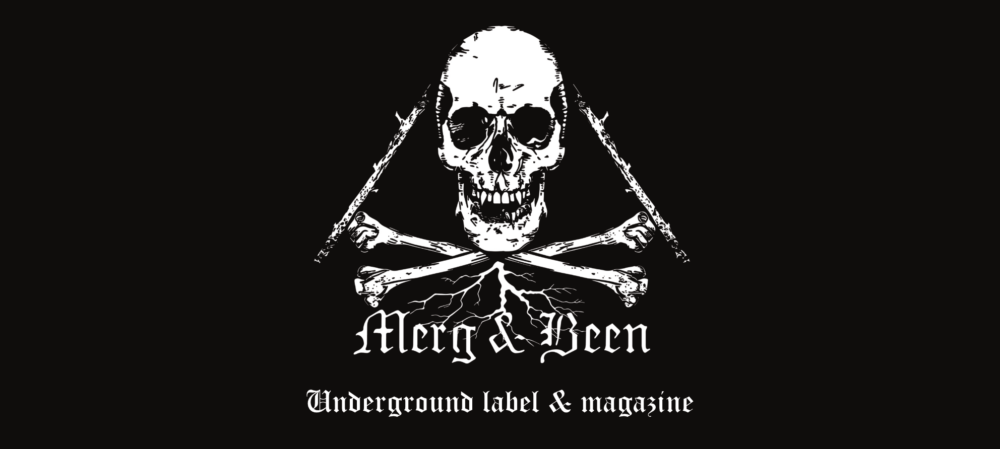
Some time ago, I had a visitor from Genk, Belgium it was J from the black metal formation nether. Over a few cups of coffee, we talked about his band—it turned into quite a lengthy conversation.
You’re all veterans of the Belgian black metal scene. In 2019 you decided to join forces to create something new. Where did that drive come from?
Well, I think “veterans” is a nice word. We’re not exactly widely known, but we’ve been playing in different bands for a long time.
I’ve been in Signs of Darkness since, I think, 1994. Kevin, our guitarist, was in Necrosis sometime in the mid-to-late 90s, leading up to the 2000s. And Benjamin, our drummer, has played in various other bands.
So yes, in that context, you could say we’re veterans. After Signs of Darkness split or stopped, I decided—how should I put it?—not to let the child sleep, the black metal child inside me. I brought Peter, our then-guitarist from Signs of Darkness, into another band.
That was essentially the foundation of nether—Peter and me. Peter has since sadly stopped, but at the time I quickly brought Kevin on board, and then Benjamin. We started somewhere around 2018–2019, and very quickly had a full album ready, which came out then.
It simmers and boils, and then the pot overflows. I notice in myself—and Kevin as well—that making music is just in you. Other people stop, other band members stop, and I can understand why. But for me, I don’t see that happening anytime soon.
Does someone leaving make you more creative, or just more determined to keep going?
We’ve always written our songs ourselves. In Signs of Darkness that was the case, and in nether it’s the same—always collectively. By that I mean, written and created together.
Someone brings a riff, someone else brings another riff or an idea, and we bring it together at rehearsal. We rarely, if ever, write digitally, like some bands do. That works for them, but we’re old-school in that sense—we create everything in the rehearsal space.
That’s also why it sometimes takes longer before something is finished. Sometimes inspiration comes quickly, sometimes it takes months to get something decent. But we’re not the kind of digital-writing band that builds songs that way.
As for the question—are you more creative when someone leaves? Well, Peter stopped as lead guitarist, though in our band it’s hard to call someone “lead” because our lines are more interwoven. When he left, the guitar and bass duties shifted between Kevin and me, but it went pretty smoothly because we were on the same wavelength.
Now that Benjamin, our drummer, has decided to stop, we’re still figuring out what that will mean. But the writing process hasn’t stopped—we’re already working on the next one.

Have there been any candidates for the drummer position, or do you already have an idea for the future?
We have an idea, yes. But candidates who meet the minimum requirements—we haven’t had those yet. At the last rehearsal, Kevin and I talked about just letting the creative process flow and maybe working with session drummers for now. People who can write and record the drum parts, and who we can call in on a flexible basis. I think that might be the easiest option until we find a permanent replacement.
Your band is full of symbolism—a small “n” in your name, a tree, a logo that radiates its own world. Who came up with the mythology around nether, and what exactly does the symbol stand for?
It’s not overly complex. The idea behind nether is that, throughout your life, you’re often confronted with people, ideas, or movements that aren’t necessarily your own—sometimes even forced upon you. That’s one aspect. Another is that some people try to belittle or suppress you, not seeing who you truly are.
That’s the main part. Hence the small “n” in nether—to symbolize being pushed down, suppressed, or overlooked. In the logo, the “H” also acts as a kind of gate, always with a deeper meaning behind it.
The tree with roots is there because everyone has their own roots—cultural, historical, and personal. Trees often remain where they are, and if they’re uprooted or moved, it doesn’t always go well. The symbol is basically a reflection of the idea that you are who you are.
You shape yourself into the person you become, open to constructive feedback—both personally and professionally—but you don’t have to bow down to others. That’s the central idea.
Our first album, Between Shades and Shadows, was about stepping out of someone else’s shadow. The second, The Blood of Rats, was about pushing aside those who tried to dominate or belittle you—the “rats” of society. That’s why the rats appear on the tree roots in the artwork.
In most black metal bands, it’s also often about the formation of the individual, standing strong as an individual—placing yourself first so you can stand firm against the rest. That’s how I’ve always identified with black metal. And not letting God, Jesus, or whoever tell you what to do. For me, it’s about strength from within.

For the production of your latest album, you pulled out all the stops. How was it working with Wessel Reijman and JB van der Wal?
Our first album was fully self-produced—recorded and mixed, or at least attempted, by Peter, our former guitarist. He wanted it to be so perfect that he got stuck, which is understandable. The basic sound was good, but it didn’t have enough of that robust black metal feel that the rest of us wanted.
Since the nether concept is rooted in personal, close-to-home themes, we decided to keep the production close to home as well. I knew Laster’s albums and the work Wessel had done for many Dutch black metal bands, including Grafjammer. He was the one we wanted.
I met him at the Samhain festival in Hasselt, where he played with Laster. We set up a meeting, and it all went smoothly. At that time he was still in Tilburg. We recorded the drums in our rehearsal space and sent them to him, and then recorded guitars, bass, and vocals in his studio.
Everything went according to plan, and the mixing and post-production process ran very smoothly. After talking with Wessel about the desired tone, depth, and sound balance, JB van der Wal came in for mastering. I own quite a few albums he’s mastered, so I knew it would fit perfectly. It was all arranged through Wessel.
For the release, you worked with Void Wanderer and War Productions. Only the CD came out through them, while you handled the vinyl yourselves. How was that collaboration?
That went very smoothly. We wanted to bring the band back to basics—the previous label was Spanish, and we felt we were missing something there. So: back to basics, closer to home in writing, production, label, and live shows.
I put together promo packages and sent them to several labels. Void Wanderer was the first to respond with a concrete proposal. We already knew Ward, his releases, and the “Zwotte Kring” story, so it all made sense. Everything was arranged quickly.
The CD was a digipack version—we’d never done one before, not in this band or the previous one. For vinyl, Ward said it wasn’t feasible at the time, so we handled it ourselves. Ward often does our merch at shows and even joins in live vocals for “The Obelisk.”

You played live several times last year. How does it feel to perform your songs live, and what’s the general response?
Last year we played in Germany with Tsatthoggua, among others. We don’t play live very often, maybe four to six times a year, which is enough for us—and these days that’s actually quite a lot.
The response to the latest album has been really good, both on record and live. In Utrecht and even in Germany, I’ve noticed people singing along—which is rare in my experience since 1994. That’s a great feeling.
I’ve never called myself a great musician or a great live musician—there are always technical issues, cables, squeaks and pops—but the reactions from organizers and audiences lately really motivate us to play more. We have a very solid live band, especially with Benjamin, who plays perfectly to the click. You just have to be able to hear and follow him.
You must sell a lot of merchandise at those shows. Is the CD sold out?
Almost—there are a few copies left, both with me and with Ward. It was a limited edition, but it’s better to sell out a limited run than to be stuck with hundreds of copies.
What are the plans? You mentioned the drummer issue, but you’re still working ahead?
Yes, we’re continuing. Kevin and I are working on new material. I’d already asked Wesley Dewanckel, who did the previous album’s artwork, to start preparing the next one. Once the creative part is done, we’ll be ready to move forward.
I also suggested to Kevin that maybe, as a bridge between The Blood of Rats—which has been out for about a year now—and the next release, we could do something like an EP or a split, maybe on vinyl, with another well-known or like-minded band.
Thanks for your time. The stage is yours for your last words.
Yes, the famous last words—they’re always the same for me: you have to make sure you stay close to yourself. That’s the essence. That’s the essence of me, and of the band. That’s very important.

